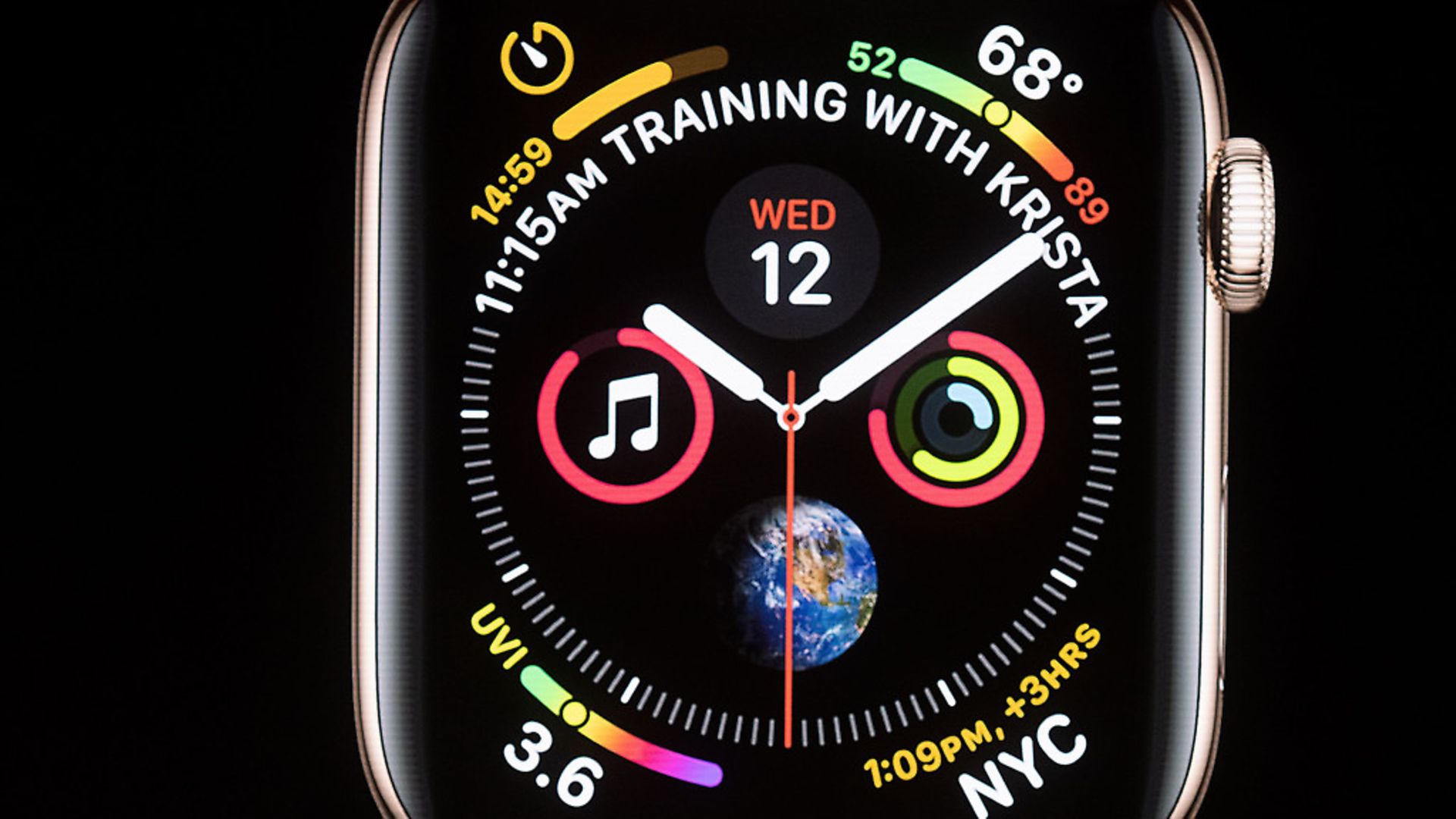
Consumer devices which monitor your health are great for the worried well and wealthy. But the vogue spells disaster for the health service. TRACY KING reports
Say you’re out walking and you experience a sudden chest twinge. You’re otherwise healthy and not in any risk group for heart problems, but you’ve done a bit of reading lately about strokes or heart attacks and you’re suddenly worried that the chest pain isn’t indigestion, but something more serious. It subsides after a minute or so but the paranoia has set in. Would you feel better if you had been wearing a heart monitor? If so, you’re one of the ‘worried well’, and therefore the perfect candidate for a wearable health tracker.
Wearable health tech has been around for a long time. In medicine, at-risk patients can be fitted with a device that monitors vital signs and provides data for doctors to use. The output of these devices is closely monitored by medical professionals, who are trained to read the data and – crucially – understand it in context of the patient’s medical history.
Patient empowerment is really, really important. The more a patient knows about their illness and treatment, the better, particularly when it comes to consent for risky treatments or operations. In the context of an ill person, wearable health technology prescribed by a doctor can be really useful.
Another example is fall detection. These devices are usually in the form of a large necklace or bracelet containing sensors and an accelerometer which notices if the wearer suddenly falls down, and sends an alert to a call centre. This is usually funded by a subscription of a few hundred pounds a year. Like vital signs monitors, fall detectors are only of use to a very specific group of people – in this case, the elderly, dementia patients, or those at risk of a sudden fall.
But that’s not where the target market is. Wearable health technology is increasingly aimed at people who aren’t at risk, elderly, or ill, but who are a bit paranoid about their health. People like me.
Last month, technology giant Apple announced that the latest iteration of the Apple Watch, the Series 4, would have a built in electrocardiogram (ECG), and fall detection.
Fall detection is notoriously unreliable technology. False alarms can be common because there is no one way to fall over (or, if you’re over a certain age, to ‘have a fall’). Fall detectors are pretty accurate if you fall very quickly and cleanly from a standing position, but not so good if you stagger a bit or slide out of your chair. Fall detectors may not detect your fall at all, with serious consequences. Or, more likely, it may think you’ve fallen when you’ve merely bent down to pet the cat.
To customers of fall detectors, those false alarms – or ‘false positives’ as they’re properly called – can be an acceptable trade off if the wearer is in a high risk group. Better to have the occasional false alarm from a dementia patient than no fall detection at all, goes the argument. But from the marketing, the Apple Watch isn’t aimed at dementia patients, or the elderly, or other at-risk groups. It’s aimed at the affluent mid-career professionals who make up the majority of Apple Watch owners.
Another likely reason Apple Watch is ramping up its health and fitness capabilities is Fitbit. One of the original devices on the wearable fitness tracking market, the Fitbit became a sort of lifestyle statement. ‘I take my health seriously’, the slim black bracelet screamed, ‘I’m a person who counts my footsteps’. The fancier Fitbit models include sleep-tracking, fertility-tracking and heart rate-tracking using something called photoplethysmography, which is a tongue-twisting way of saying the Fitbit shines a light into your skin to measure blood flow.
Despite its popularity, Fitbit has been beleaguered with problems around the accuracy of heart rate-tracking, including a major ongoing class action lawsuit. When Apple announced the latest version of the Watch, which adds ECG and fall detection to the existing light-based heart monitor, Fitbit’s share price fell 8%. Fitbit opened up the wearable health tech market, and Apple has stepped in.
Jeff Williams, Apple’s chief operating officer, called the new Apple Watch ‘an intelligent guardian for your health’, perhaps forgetting that we are already intelligent guardians for our health. I can take my own pulse without any technology at all, should I so need. But, crucially, I don’t need, and neither do the majority of people in the Apple Watch demographic.
If I feel ill, that is when testing is useful. But if I feel fine, then I’m probably fine. The Apple Watch UK website says, ‘if it detects unusually high or low heart rates, it alerts you – even when you don’t feel symptoms’. If my wearable ECG says I’m not fine, who do I believe? My own body, or Apple’s hardware?
In the UK, it’s pretty difficult to bring a medical device to market, and regulation can be stiff, but health and fitness trackers haven’t been marketed as medical devices, despite the very clear medical implications of monitoring your own heart rate. Until now.
In the USA, the Food and Drug Administration has pre-cleared (the first step in getting FDA approval) the Apple Watch ECG for detecting atrial fibrillation (AF), a heart condition which affects around a million people in the UK alone. Apple’s website declares ‘Apple Watch Series 4 checks your heart and alerts you to these irregularities – so you can take immediate action and consult your doctor’.
But AF mainly affects the over-65s and those with existing medical conditions. There is no reason whatsoever that anyone outside of risk groups should be monitoring their heart rate. Indeed, it can even make your health worse. There is some evidence that wearing a heart monitor during exercise actually stops people from exerting themselves, which of course means they’re not getting an optimum work out. Rather defeats the object of exercising.
And that’s before we even get to reliability. Dr Sekar Kathiresan, a heart disease expert from Massachusetts General Hospital, told statistics website Stat News: ‘For even a very accurate test in a condition that is [uncommon], most of the tests that are going to come back will be false positives.’ The false positive rate of the technology combined with the very low risk of Apple Watch’s demographic having AF means that a lot of people are going to be very concerned about their heart and seeing their GP for no reason.
It isn’t yet known if the new medical capabilities of the Apple Watch will be available in the UK, although it seems highly unlikely that, even if available here, the fall detection will immediately call an NHS ambulance. That would be a scandal bigger beyond even Apple’s PR capabilities. But even without automatic ambulance calling, the increasing media coverage, public interest and market for wearable health technology is going to place an unnecessary burden on the NHS.
These devices are perfectly suited to the worried well, and selling healthcare solutions to people who aren’t ill is profitable. Brexit is likely to increase the partnership between the NHS and the private health sector, the British public’s health becoming a market from which to make money.
The NHS currently caters for people who are ill, but the worried well are placing an increasing burden on already over-stretched services. Brexit may open the NHS a double whammy of foreign competition and a change in medical device regulation, and the floodgates for direct-to-consumer testing and tracking of a healthy population will open.
Here’s what happens. The more testing or monitoring that is available for the general public to buy and use (without training or any knowledge of how to interpret results or even if results are valid), the more people will be turning up at their GP or even A&E saying ‘hey, I have this result, what does it mean?’. Remember the quote from the Apple Watch website – ‘you can take immediate action and consult your doctor’. The NHS is expected to validate the results of consumer devices even when no other symptoms are present, at the expense of the genuinely ill.
Among Apple Watch owners, 79% say they use it for health and fitness monitoring, so it is understandable that the company wants to expand the health tracking capabilities of the device. But unless that correlates with Apple Watch wearers mainly being in high risk groups for heart problems or falls, it’s more likely to lead to more health anxiety than anything else, and that is very bad news for the NHS.










